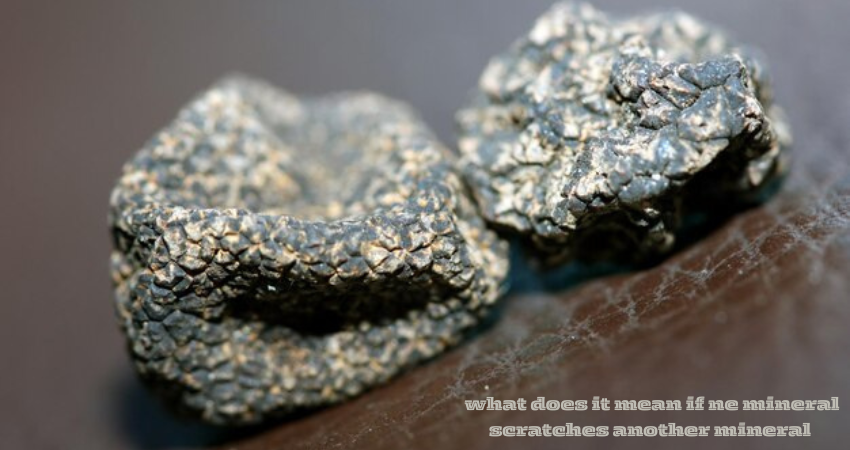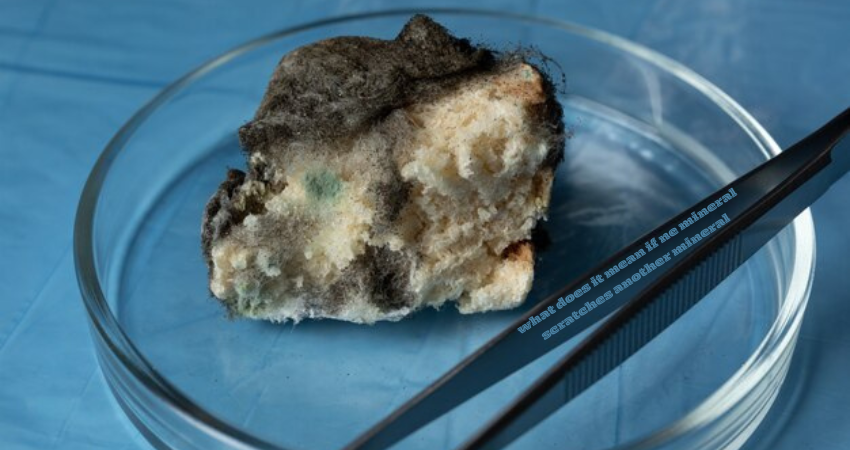What does it mean if ne mineral scratches another mineral, the building blocks of Earth’s crust, are characterized by a variety of properties, including color, luster, and density. Among these properties, hardness stands out as one of the most intriguing. Hardness refers to a mineral’s ability to resist scratching or abrasion. When one mineral scratches another, it reveals critical information about the two substances’ relative hardness.
This concept is not just a measure of physical resistance; it also reflects the internal atomic structure of minerals. From ancient civilizations to modern-day scientists, the ability to measure and compare mineral hardness has shaped industries, technologies, and even cultural practices.
Defining Mineral Hardness
What is Mineral Hardness?
What does it mean if ne mineral scratches another mineral is a mineral’s resistance to being scratched. It is a physical property that helps geologists identify and classify minerals. Hardness depends on the strength of a mineral’s atomic bonds and the density of its atomic packing.
For example, a diamond, the hardest natural substance, has a tightly packed lattice structure of carbon atoms. This makes it nearly impervious to scratches from any other material. Conversely, talc, a soft mineral, has weak bonds between its layers, making it easily scratched by almost any other material.

How Minerals Interact
Scratching as a Measure of Hardness
When one mineral scratches another, the harder mineral effectively cuts into the softer one, breaking its atomic bonds. This interaction provides a simple but effective way to compare their hardness. A scratch test involves dragging one mineral across the surface of another under controlled pressure.
For instance, if mineral A scratches mineral B, mineral A is harder. This straightforward method, combined with tools like steel plates and glass, has been a cornerstone of geology for centuries.
Historical Context of Hardness
Ancient Methods for Evaluating Hardness
The understanding of mineral hardness dates back thousands of years. Ancient Egyptians used hardness tests to select materials for tools and carvings. Similarly, early metallurgists assessed ore durability using scratch tests.
In ancient Greece, Theophrastus, a philosopher and scientist, classified minerals based on their physical properties, including hardness. Later, Pliny the Elder in Rome documented how certain gemstones resisted scratches better than others.
The Mohs Scale of Hardness
Friedrich Mohs and the Scale’s Inception
In 1812, German mineralogist Friedrich Mohs developed the Mohs Scale of Hardness, a relative scale ranging from 1 to 10. Mohs assigned a number to ten reference minerals based on their ability to scratch one another. The scale provided a universal framework for identifying and comparing minerals.
Exploring the Mohs Scale in Detail
How Each Mineral Fits on the Scale
Each mineral on the Mohs scale represents a benchmark. For example:
Talc (1): Often used in powders, talc is extremely soft and can be scratched with a fingernail.
Diamond (10): A gemstone prized for its beauty and unmatched hardness, capable of scratching all other materials.
The scale, while simple, has stood the test of time due to its practical application in fieldwork.
Scientific Understanding of Hardness
The Atomic Basis of Hardness
A mineral’s hardness depends on:
Bond Strength: Stronger atomic bonds, like covalent bonds in diamonds, contribute to higher hardness.
Atomic Packing: Densely packed atoms create fewer weak points, increasing resistance to scratches.
For instance, quartz’s hardness (7) stems from its silicon-oxygen bonds, which are stronger than the calcium bonds in calcite (3).
Why Minerals Scratch Each Other
The Science Behind Scratching
Scratching occurs when the harder mineral’s atoms break the bonds of the softer mineral. This is not just a matter of force but also geometry. The microscopic points of contact allow harder substances to penetrate weaker structures.
For example:
Quartz scratches glass because its silicon-oxygen bonds are significantly harder than the amorphous structure of glass.
Applications of Hardness Testing
Industrial Uses
Hardness testing is critical in industries such as:
Jewelry: Gemstone durability depends on hardness.
Construction: Granite’s hardness makes it ideal for countertops and monuments.
Abrasives: Materials like corundum and diamond are used to cut and polish other substances.
Limitations of the Mohs Scale
While invaluable, the Mohs scale has its drawbacks:
Non-linear Progression: The scale is relative, not proportional. For example, diamond is far harder than corundum, but the scale does not reflect this.
Surface Imperfections: A scratched surface may not always indicate true hardness due to impurities.
Alternatives to the Mohs Scale
To overcome its limitations, other scales have been developed:
Knoop Hardness Test: Measures microhardness using indentation.
Vickers Hardness Test: Provides precise measurements, especially for metals.
Brinell Hardness Test: Used for bulk materials.
Famous Examples of Mineral Hardness
Diamond vs. Graphite
Despite being made of carbon, diamond and graphite have vastly different hardness levels. Diamond’s tetrahedral structure creates immense hardness, while graphite’s layered structure allows easy flaking.

Cultural and Historical Significance
Hardness has shaped human history:
Ancient Tools: Flint, a hard mineral, was used for cutting and hunting.
Jewelry: Hard gemstones like sapphires symbolize wealth and durability.
Modern Use of Hardness Concepts
In today’s world, understanding hardness influences:
Mining: Identifying minerals and determining extraction methods.
Material Science: Developing harder, more durable materials.
FAQs on Mineral Hardness
1. What does mineral hardness mean?
It refers to a mineral’s resistance to scratching or abrasion.
2. How is hardness tested?
Using the Mohs scale or modern techniques like the Vickers test.
3. Why is diamond the hardest natural substance?
Its carbon atoms form a rigid tetrahedral structure.
4. Can the Mohs scale measure all materials?
No, it’s most suitable for minerals and not ideal for metals or synthetic materials.
5. Why are softer minerals still useful?
Their properties, like flexibility or lubrication, are valuable in specific applications.
6. What mineral is softer than talc?
Talc is the softest known mineral.
Conclusion
The ability of one what does it mean if ne mineral scratches another mineral another reveals a wealth of information about their composition and internal structure. From ancient civilizations to modern industry, understanding mineral hardness has been pivotal in shaping human knowledge and technology. Whether used in identifying gemstones or crafting cutting-edge materials, the science of hardness remains as relevant today as it was centuries ago.


